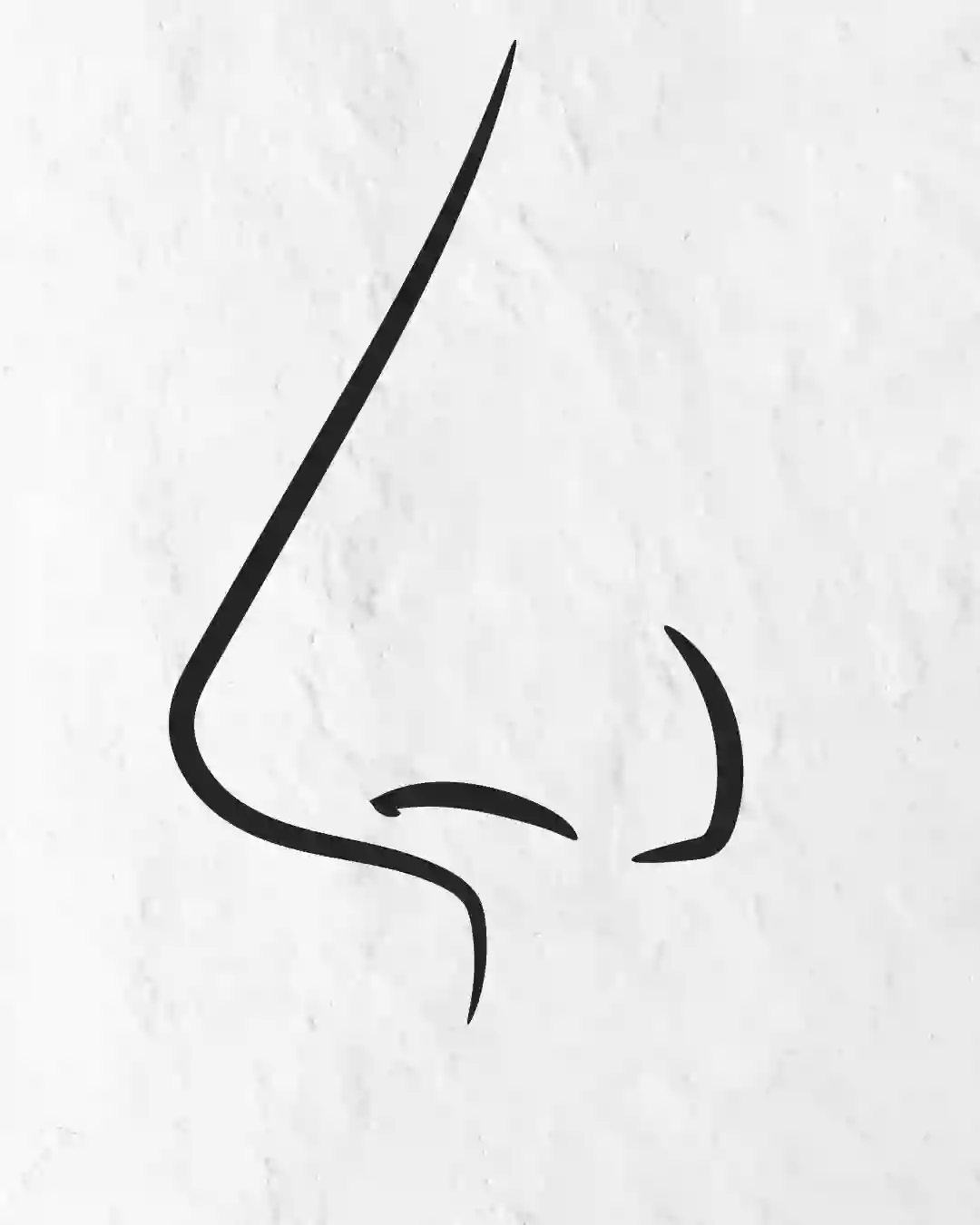Summarize this Article with:

In the magical tapestry of Roman mythology, where gods and goddesses weave their tales, one figure stands out like the first rays of sunlight breaking through the darkness. Meet Aurora, the ethereal goddess of dawn, whose very name evokes the splendor of daybreak. In a realm where stories of divine beings unfold, Aurora holds a special place as the bringer of light and the harbinger of a new day. With her radiant presence and mythical origins, Aurora’s role is as captivating as the dawn she personifies. Join us as we delve into the realm of Roman mythology to uncover the enchanting story of Aurora, a goddess whose radiance illuminates both the skies and our imaginations.
The Dawn’s Early Light: Who is Aurora?
In the tapestry of Roman mythology, Aurora emerges as a vital and captivating figure, casting her shimmering light upon the world. She is the very embodiment of dawn itself, a celestial being whose presence heralds the awakening of a new day. As the goddess of dawn, Aurora holds the extraordinary responsibility of ushering in the first light, banishing the shadows that cloak the Earth during the night.
Imagine the scene: a vast expanse of darkness gradually yielding to the gentle touch of Aurora’s rosy fingertips. Her arrival is a moment of transition, where the veil of night is lifted to reveal the radiant promise of a fresh beginning. It is Aurora’s divine duty to break through the darkness, filling the world with her radiant glow and breathing life into all living things.
Aurora’s role as the bringer of light resonates deeply with the human spirit. Her appearance on the horizon not only marks the physical transition from night to day but also symbolizes the eternal cycle of renewal and hope. Through her presence, she instills in us the belief that with each dawn, the opportunity for a new start beckons, washing away the worries of yesterday and inviting us to embrace the possibilities of today.
The Birth of Aurora: A Mythical Origin
In the celestial realm of Roman mythology, the story of Aurora’s birth unfolds like a mesmerizing tapestry, woven with threads of divine intrigue and beauty. She emerges as the daughter of the Titan couple Hyperion and Theia, celestial beings who themselves embody the very essence of light and radiance. From this divine union, Aurora is born, a luminous figure destined to illuminate the world with her brilliance.
Hyperion, the titan of light, and Theia, the titaness of sight, joined forces to create Aurora as the embodiment of dawn’s splendor. Their union symbolized the merging of light and perception, resulting in a goddess whose very existence would shape the way mortals and immortals alike perceive the world around them.
Aurora’s siblings, Helios (the Sun) and Selene (the Moon), further solidify her significance within the divine family. Together, they represent the celestial triad that governs the cycles of day and night. Helios takes charge of the sun’s blazing radiance that lights up the day, while Selene bathes the night in the soft glow of the moon. Aurora, positioned at the very beginning of this cosmic sequence, heralds the coming of Helios’ chariot and the rebirth of daylight.
As the sibling closest to the dawn, Aurora holds a unique place within the celestial hierarchy. Her existence bridges the gap between the tranquil moonlit hours and the vibrant brilliance of the sunlit day. It is through her that the world awakens, and mortals are granted the gift of a new day filled with potential and promise.
With each sunrise, as Aurora’s fingers brush aside the veil of darkness, she not only fulfills her role as the goddess of dawn but also reaffirms her place as an integral part of the cosmic order. The story of Aurora’s birth is not just a myth; it’s a testament to the power of light, perception, and the seamless dance of celestial forces that shape the very fabric of our world.
Chariot of Splendor: Aurora’s Daily Journey
As the world slumbers in the comforting embrace of night, an enchanting spectacle unfolds in the heavens above. Aurora, the radiant goddess of dawn, prepares to embark on her daily journey, a celestial procession that ushers in the dawn’s brilliance and fills the sky with breathtaking hues.
Aurora’s chariot, a marvel of divine craftsmanship, awaits her command. Pulled by four majestic horses, each as splendid as the next, the chariot is a symbol of the power and grace that she embodies. With reins in hand, Aurora guides her chariot across the sky, illuminating the horizon with an ethereal glow.
As her chariot ascends, the heavens begin to transform. The canvas of the night is painted with the first strokes of Aurora’s touch, gradually transitioning from velvety darkness to a palette of soft purples, delicate pinks, and hues of gold. The stars, like fading diamonds, retreat as the goddess’ light takes center stage.
The world awakens to the mesmerizing display, and nature stirs in response. Birds chirp in joyous chorus, welcoming the dawn, while flowers unfurl their petals to catch the first warm rays of Aurora’s embrace. The landscape comes to life, basking in the radiant glow that she brings.
With every passing moment, the colors intensify, casting a warm and hopeful ambiance upon the earth. The heavens themselves seem to celebrate the goddess’s journey, as if the very cosmos recognizes the significance of her arrival. And as the chariot completes its celestial voyage, the sun finally breaches the horizon, casting aside the final remnants of night’s embrace.
In that fleeting, magical moment, when Aurora’s chariot graces the sky, the world is bathed in the promise of a new beginning. Her journey is not just a physical crossing of the heavens; it is a testament to the eternal cycle of renewal. And as she continues her daily passage, she reminds us that no matter how dark the night, the dawn’s radiant light will always come, bringing with it the beauty, hope, and limitless possibilities of a brand-new day.
Love and Longing: Aurora and Tithonus
Even in the realm of gods and goddesses, love can weave a tapestry of both joy and sorrow. Aurora, the goddess of dawn, found herself entangled in a poignant love story that resonates with the emotions of mortals and immortals alike.
Aurora’s heart was captured by Tithonus, a mortal of extraordinary beauty and charm. Their love blossomed like a radiant flower, a bond that bridged the gap between the divine and the earthly. The goddess was so enamored by Tithonus that she longed to keep him by her side for all eternity.
Unable to bear the thought of their love being cut short by mortal frailty, Aurora beseeched the gods for a gift that would grant Tithonus immortality. Her plea was answered, and Tithonus was granted the boon of eternal life. However, in her ardor, Aurora forgot to ask for eternal youth to accompany his endless days.
As the years went by, Tithonus found himself trapped in a cruel fate. His body continued to age and wither, while his mind remained sharp and his spirit unyielding. The once-handsome mortal now bore the weight of age’s burden, his body bent and frail, his eyes dimmed by the passage of time.
Aurora, bound by her promise and consumed by regret, watched helplessly as Tithonus became a living embodiment of the bittersweet nature of love. She had saved him from the embrace of death, but in doing so, she inadvertently sentenced him to an eternity of suffering, forever separated by the gulf of aging.
Bonds of Family: Aurora and Eos

In the intricate tapestry of mythology, the threads of family ties often weave together beings of great significance. Such is the case with Aurora, the Roman goddess of dawn, and her Greek counterpart, Eos. These radiant sisters share a bond that transcends cultural boundaries and showcases the interwoven nature of divine narratives.
Eos, like Aurora, is a luminous figure associated with the break of day. In Greek mythology, she is the goddess of dawn, heralding the arrival of the sun with her radiant presence. Despite their distinct cultural origins, Aurora and Eos share a familial connection that bridges the gap between Roman and Greek mythologies.
The relationship between Aurora and Eos is not merely one of parallel roles, but also of shared purpose. As the goddesses of dawn, they stand at the crossroads between night and day, guiding the celestial chariots that carry the sun’s light across the sky. Their synchronized efforts mark the delicate transition from darkness to illumination, as Eos opens the gates for her brother Helios, the Greek sun god, to embark on his daily journey.
This shared responsibility, divided by culture yet united in essence, speaks to the universal nature of dawn’s symbolism. Whether through the lens of Roman or Greek myth, the arrival of dawn represents the promise of renewal, hope, and the endless cycle of beginnings. Aurora and Eos, each in their respective pantheons, embody the beauty of transition and the magic of the ever-turning cosmic wheel.
As we peer into the sky and witness the graceful passage of Aurora’s chariot, we are reminded not only of the goddess herself but also of the intricate web of family connections that bind divine beings across cultures. In their shared role as dawn-bringers, Aurora and Eos offer us a glimpse into the harmonious interplay of mythological traditions, showing that even amidst differences, there exists a shared reverence for the radiance that marks the start of a new day.
Constellations and Legacy: Aurora’s Influence
The legacy of a goddess extends far beyond the realm of myth, seeping into the very fabric of the cosmos and leaving an indelible mark on human imagination. Such is the case with Aurora, whose celestial presence can still be traced in the glittering expanse of the night sky.
As twilight gives way to the embrace of night, constellations emerge, forming stories written in the stars. Among them, Aurora’s essence shines brightly through the constellation named after her. The constellation Aurora, often referred to as “Auriga” in Latin, depicts her in the form of a celestial charioteer, a fitting representation of her role as the goddess of dawn who guides the sun’s chariot across the heavens.
But Aurora’s influence goes beyond the stars. Her myth has woven its way into the tapestry of human creativity, inspiring artists, writers, and thinkers throughout history. In art, her radiance has been captured on canvas, with her chariot and rosy fingers depicted in countless paintings. In literature, her story has graced the pages of epic poems, sonnets, and narratives, serving as a symbol of hope and the beauty of new beginnings.
In the realm of culture, Aurora’s legacy resonates through the ages. Her portrayal in various forms of media, from ancient sculptures to modern films, speaks to the enduring fascination with her role as the harbinger of light. She embodies the universal yearning for renewal and the awe that nature’s cycles evoke in human hearts.
Aurora’s story has transcended time and geography, leaving an imprint that extends far beyond the boundaries of myth. Her celestial presence and her role in guiding the sun’s journey across the sky are mirrored in the constellations above, reminding us of the cosmic dance that connects us to both the past and the future. As we gaze upon the stars and contemplate the legacy of Aurora, we are reminded that her story is not just a fragment of the past—it is a radiant thread that continues to weave its way through the very essence of our human experience.
Symbolism of Renewal: Aurora’s Meaning
Amidst the intricate tales of gods and goddesses, Aurora’s story stands as a beacon of profound symbolism, weaving the threads of mythology into a tapestry of hope, renewal, and the eternal cycle of life.
Aurora’s role as the goddess of dawn aligns beautifully with her symbolic significance. As the bringer of light, she heralds the dawn of a new day, casting aside the darkness and granting the world the gift of illumination. In this role, she becomes a metaphor for new beginnings—a celestial reminder that no matter how bleak the night may be, the sun will rise again, and with it comes the chance for a fresh start.
The very act of Aurora’s chariot crossing the sky mirrors the cycle of life itself. Just as the night gives way to the day, life’s challenges and hardships are met with the promise of a brighter tomorrow. Her journey symbolizes the inherent rhythm of existence, where endings pave the way for beginnings, and darkness eventually yields to light.
In Aurora’s myth, we find a reflection of the human experience—an ode to resilience and the unwavering spirit to rise again. Her tale resonates with those who have faced adversity, reminding us that after the longest night, the dawn will break, illuminating a path forward.
Furthermore, Aurora’s symbolism extends to the daily renewal of the world. Each sunrise becomes a tangible manifestation of her mythological role. Just as she banishes the shadows with her radiant touch, so does the sun wash away the night’s obscurity. The warmth of her embrace signifies the rejuvenation of the natural world, as flora and fauna awaken to the promise of a new day.
In every dawn that graces the horizon, Aurora’s symbolism unfolds before our eyes, inviting us to embrace change and the infinite potential that lies within each moment. She encourages us to find solace in the idea that no matter how dark the night may seem, the dawn’s radiant light is never far away. As we witness the sunrise, we are reminded that just as Aurora journeys across the sky, we too embark on our journey through life—a journey of constant renewal, growth, and the enduring hope for brighter days ahead.
The Goddess of Hope: Aurora’s Message
As we reach the conclusion of our journey through the captivating mythology of Aurora, the goddess of dawn, we are left with a timeless message that transcends the boundaries of time and culture—a message of hope, renewal, and the beauty of new beginnings.
Aurora’s story serves as a radiant beacon, guiding us through the labyrinth of human experience. Her role as the bringer of light, the dispeller of darkness, and the herald of daybreak is more than just a myth—it’s a reflection of the very essence of existence. In her mythological journey, we find a narrative that mirrors our own lives, reminding us that no matter how daunting the night may be, the dawn will inevitably arrive, casting its golden glow upon our path.
Her story echoes with the whispers of hope—a hope that lingers even in the darkest moments, promising that the sun will rise again. It invites us to embrace the cyclical nature of life, to find strength in the face of challenges, and to believe in the beauty of second chances. Just as the dawn heralds a fresh start, Aurora’s myth inspires us to approach each day with a heart full of optimism and a mind open to the possibilities that lie ahead.
In a world where uncertainty and change are constants, Aurora’s message becomes an invaluable companion. She encourages us to appreciate the small yet profound moments of renewal that occur daily—the fleeting but awe-inspiring transition from night to day. Each dawn holds within it the promise of a new beginning, a chance to embark on a journey of growth, resilience, and the unwavering belief that light will always conquer darkness.
Conclusion: Embracing the Dawn
In the realm of Roman mythology, the luminous figure of Aurora, the goddess of dawn, has emerged from the tapestry of ancient tales to capture our imagination and hearts. As we draw our journey to a close, let us reflect on the threads that compose her story and the profound significance she holds.
Aurora, the celestial charioteer, stands at the threshold between night and day, her radiant touch banishing the shadows and heralding the arrival of a new beginning. Born of the titan couple Hyperion and Theia, she embodies the essence of light and perception, illuminating not only the heavens but also the deepest recesses of our souls.
Through her chariot’s daily journey across the sky, Aurora offers us a visual symphony of colors that paint the canvas of dawn—a canvas that mirrors the eternal cycle of life, of challenges and triumphs, of endings and fresh starts. Her love story with Tithonus, though bittersweet, underscores the complexity of emotions that bind humanity together, reminding us that even gods are not immune to the echoes of love and longing.
Aurora’s familial bond with her Greek counterpart Eos bridges the gap between cultures, illustrating the shared symbolism of dawn’s arrival across different mythological traditions. Her myth, etched across the night sky as the constellation Aurora, transcends time and space, inspiring artists, writers, and thinkers to capture her radiance in various forms of expression.
But perhaps her most poignant legacy is the message she imparts—a message of hope, renewal, and the promise of a fresh start. Aurora’s myth resonates with the human experience, reminding us that no matter how dark the night may seem, the dawn’s light will break through, dispelling the shadows and illuminating the path ahead.
So, as you stand witness to the next sunrise, may you do so with a newfound appreciation for Aurora’s enduring legacy. Let her presence remind you that each dawn is a gift, a chance to embrace the possibilities that lie ahead, and an opportunity to rise above challenges with the knowledge that the dawn will always follow the night. Just as Aurora guides the sun’s chariot, may her story guide your heart toward the ever-present beauty of new beginnings.
Hey kids, how much did you like Aurora Mythology: Bringer of New Beginnings? Please share your view in the comment box. Also, please share this story with your friends on social media so they can also enjoy it, and for more such Roman Mythology, please bookmark storiespub.com.
Related Post :
FAQ about Aurora, Goddess of Dawn
Who is Aurora in Roman mythology?
Aurora is a significant goddess in Roman mythology, representing the personification of dawn. She holds the role of bringing light to the world each morning, symbolizing the start of a new day.
What is the story behind the goddess Aurora?
Aurora is born from the Titan couple Hyperion and Theia, embodying the essence of light and perception. Her daily journey across the sky in a chariot pulled by four horses heralds the dawn's arrival, banishing darkness and marking a fresh beginning.
What are Aurora's powers and attributes?
Aurora's powers are closely tied to her role as the goddess of dawn. She possesses the ability to illuminate the world, dispel darkness, and symbolize renewal and hope through the arrival of each sunrise.
Is Aurora related to the goddess Eos in Greek mythology?
Yes, Aurora and Eos share a familial connection. Aurora is the Roman counterpart of the Greek goddess Eos, both representing dawn. They both embody the same concept but within their respective mythologies.
What is the significance of Aurora's chariot?
Aurora's chariot represents her journey across the sky each morning. Pulled by four splendid horses, her chariot illuminates the horizon and ushers in the sun, symbolizing the beginning of a new day.
How does Aurora's myth influence art, literature, and culture?
Aurora's myth has left a lasting impact on various forms of artistic expression. Her story has inspired countless paintings, poems, and narratives throughout history. She embodies the concept of new beginnings and hope, making her a symbol that resonates across cultures.
What does Aurora's story teach us about hope and renewal?
Aurora's story is a testament to the cyclical nature of life. Her role as the goddess of dawn reminds us that no matter how dark the night may seem, the dawn always follows, bringing the promise of renewal and fresh opportunities.
Why is Aurora often associated with the message of hope?
Aurora's daily appearance marks the transition from darkness to light, symbolizing the triumph of hope over despair. Her role in heralding the dawn serves as a constant reminder that challenges are temporary and that a new day brings the potential for positive change.
How can we appreciate Aurora's legacy in our daily lives?
By observing the sunrise with a sense of awe and gratitude, we can embrace the message of Aurora's enduring legacy. Each dawn presents an opportunity to start anew and find hope in the face of adversity, mirroring the timeless cycle she represents.
What is the broader significance of Aurora's myth for humanity?
Aurora's myth transcends cultures and time, reflecting the universal human yearning for renewal and the innate belief in the possibility of positive change. Her story connects us to the rhythms of nature and the enduring beauty of new beginnings.













